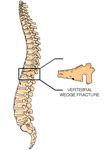Boffins discover role of oxidative stress in estrogen-related bone loss

Washington, Sep 11 : Scientists have shed light on the role of oxidative stress in estrogen-related bone loss.
Researchers at Emory University School of Medicine, with colleagues at the University of Udine, Italy, have discovered new information about an immune pathway in mice that explains how oxidative stress that results from acute estrogen deficiency leads to the loss of bone.
Researchers say that the finding could help in identifying a new drug target for preventing postmenopausal bone loss.
Previous mouse research has shown that both oxidative stress and increased T cell activity contribute to bone loss following estrogen depletion, which occurs after menopause or when ovaries are removed. Oxidative stress is the toxic accumulation of too much reactive oxygen in cells.
Research has shown that T cells contribute to bone loss because they produce a protein called tumor necrosis factor (TNF), which increases the formation of osteoclasts in rodents and humans. Osteoclasts are cells that cause an excessive destruction of bone.
In the current study, scientists discovered the "upstream" events that occur after estrogen reduction and lead to T cell overproduction. They found that reactive oxygen stimulates dendritic cells D a type of "antigen-presenting cell" that processes and presents antigen material on the surface of other immune cells D to up-regulate the immune antigen CD80.
CD80 is a "co-stimulatory" molecule that is part of the CD80/CD28 pathway required for activation of T lymphocytes. When this pathway is activated, it leads to increased T cell TNF production and ultimately to bone loss.
In order to try and prevent bone loss in the research mice whose ovaries were removed and determine how reactive oxygen was exerting its toxic effects, the research team treated the mice with the immunosuppressant CTLA4-Ig, which prevents the activation of T cells by blocking the binding of CD80 to CD28.
Because CTLA4-Ig did not directly affect osteoclasts or block the direct effects of reactive oxygen on osteoclasts, the data helped prove the researchers' hypothesis that oxidative stress causes bone loss because it activates T cells rather than acting directly on osteoclasts.
"Our research provides important information about the pathway leading from estrogen depletion to bone loss following menopause or removal of ovaries. As we learn more and more about these mechanisms, we come closer to new drug targets that could help prevent this challenging problem that affects millions of women," said lead author Roberto Pacifici, MD.
The study is published in the Proceedings of the National Academy of Sciences.(With Inputs from ANI)